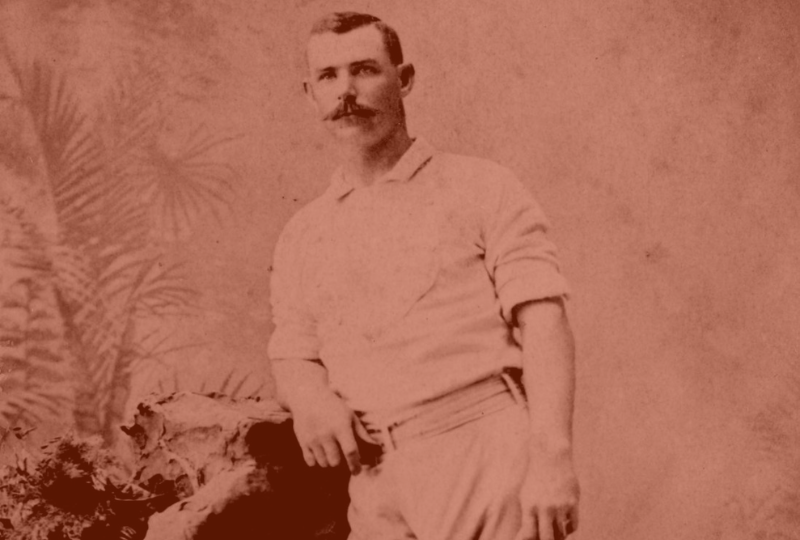“He handed the ball to the second baseman from the batter’s box.” — unknown
William “Buck” Ewing is the only catcher who played the entirety of his career in the 19th century who has been elected to the Baseball Hall of Fame. He was one of the most respected players of the early days of baseball, and one could argue that he was the greatest player in the sport in the 19th century. He was so famous that at one point while he was still an active player, the United States Postal Service considered placing Ewing’s likeness on a stamp.
In 1880, when he made his National League debut with Troy, Ewing was using the small, largely non-padded catcher’s glove that was customary. But within a few seasons, he became the most prominent convert to the catcher’s “mitt,” which featured a padded, pillow design. He utilized the new mitt and his strong arm to establish himself as the greatest defensive catcher of his era.
After the Troy franchise folded, Ewing signed as a free agent with the New York Gothams for the 1883 season. He was the first superstar for the team that would become the Giants. Twice he helped the club to pennants, and he batted over .300 eight times. He was a power hitter, finishing in the top five in slugging four times.
By 1896, Ewing was suffering from a sore arm and was player-manager of the Cincinnati Reds. He was not well-liked by many of his players. In fact, there was an open rebellion against Ewing that season which was only subdued after intervention by league officials. Buck was a taskmaster, and one of them called him “mean-spirited.” He was a notorious bully of opposing players and umpires. In July he went even further when he kidnapped an umpire in a brazen effort to win a game.
As the 1896 season dragged on, Ewing was beleaguered by challenges to his authority. He was also in the middle of financial troubles, which prompted him to seek pay advances from his employers. He was rebuffed in that effort, so he did the only thing that seemed logical to him: he bet on his own team. In order to win his bets, Buck figured he would try anything to ensure victory for his team. One of his players said Ewing used “every trick he could think of to cheat” during home games in Cincinnati.
On July 25, 1896, the Reds were scheduled to play a doubleheader against the Boston Beaneaters. Buck apparently had a lot of money riding on the second game because he benched all of his star players in the first game, and slated his best pitcher to pitch the second contest. Not content with that advantage, Ewing apprehended umpire Horace McFarlan and locked him in his dressing room before the second game. Without the official umpire from the league, the home team would be allowed to supply their own, a man named Bud Lally, a notorious “homer” who would call the game in favor of the Reds. Sure enough, Cincinnati prevailed 3-2 in the second game with the stooge umpire behind home plate, delivering a big payoff to Buck.
That scheme, while it was reported to the media and the league at the time, was never acted upon, and Ewing kept his job. (No word on how Mr. McFarlan felt about being kidnapped).
Ewing managed until 1900, but finally the “modern game” caught up with him, and he was fired by the Giants in the middle of the 1900 season. There were rumors that he was gambling again, or even stealing from his own players. He died six years later at the age of 47 from complications from liver failure.







